Archaeologists make incredible discoveries every day. Sometimes these discoveries can be scary.
Archaeologists piece history together with the sites and artifacts that they uncover. Even a simple artifact like a stone tool can provide enough information on how early people lived. Sometimes, however, archaeologists make gruesome discoveries that force us to face death and the evils of humanity. Here are 7 of the creepiest archaeological discoveries.
1. Screaming Mummy
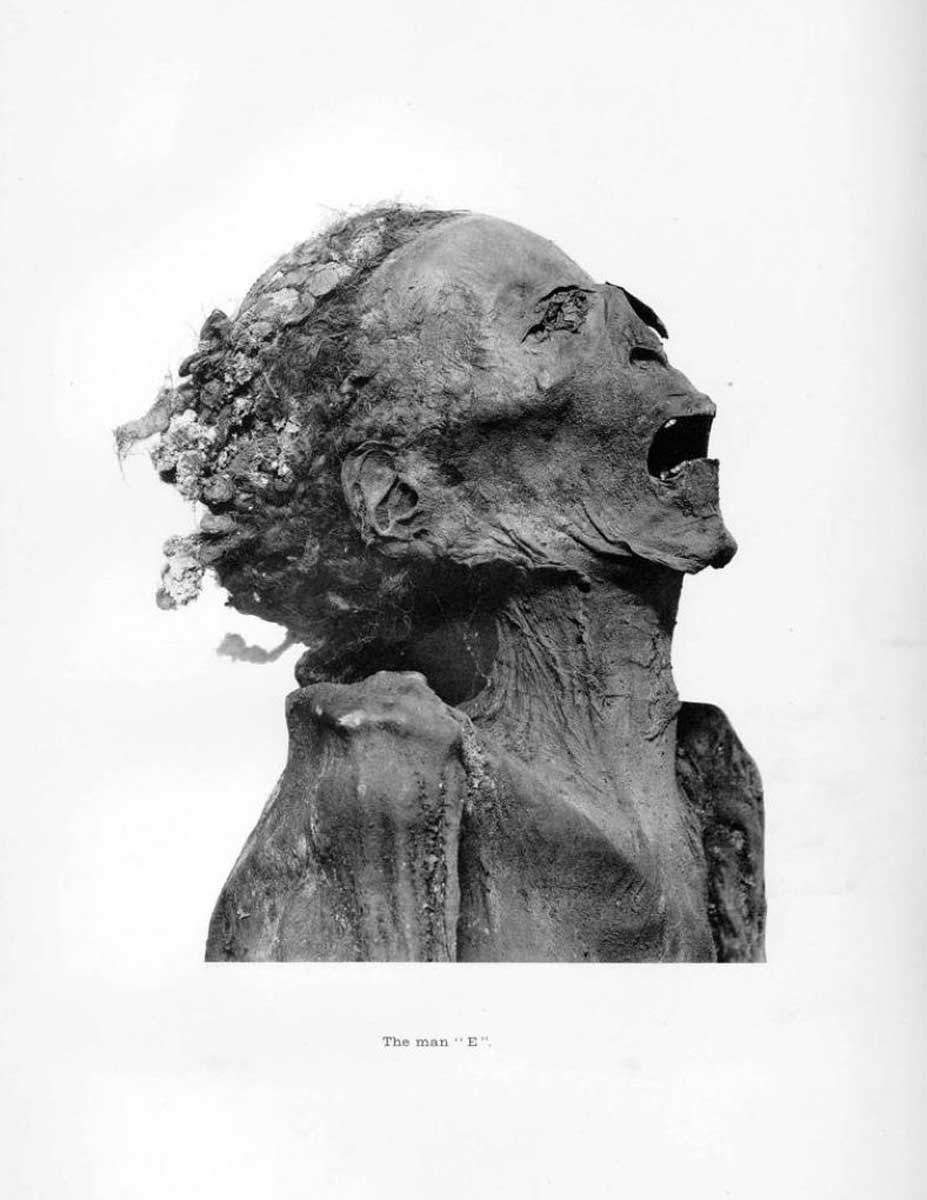
In 1886, the head of the Egyptian Antiquities Service, Gaston Maspero, unwrapped a mummy known as “Man E.” The mummy was found inside a plain coffin wrapped in sheepskin. Maspero was shocked to discover that the mummy’s hands and feet were bound.
The most striking feature was the mummy’s facial expression, which was frozen in a way that made it appear the individual was screaming. Due to the contracted state of the face and body, scientists believed that Man E may have been poisoned or buried alive. Whatever the cause, it was clear the man had endured significant pain at the time of his death.
Notably, this mummy was not mummified in the traditional manner, as it still retained all of its internal organs. Maspero theorized that the mummy could be that of Prince Pentewere, the son of Pharaoh Ramesses III. Pentewere and his mother, Tiy, were allegedly involved in a conspiracy to murder the pharaoh, though the plotters were ultimately caught and likely killed.
Regardless of the mummy’s true identity, its haunting facial expression continues to captivate people around the world to this day.
2. Bog Bodies

Bog bodies are remarkably well-preserved cadavers that have been discovered in the peat bogs of Europe. The unique conditions within the peat bogs have allowed for the remarkable preservation of the bodies’ skin, hair, and even internal organs, giving many of them a lifelike appearance that is both fascinating and a little unsettling. The oldest known bog body, the Koelbjerg Man, was found in Denmark and dated back to around 8000 BCE.
One of the most famous and intriguing bog bodies is the Tollund Man, discovered in 1950. He was found lying on his side with a rope around his neck, suggesting he may have been hanged. However, it is also possible that Tollund Man was the victim of a ritual sacrifice, as he was placed in the bog with great care. Remarkably, Tollund Man’s facial features appear peaceful, as if he were merely sleeping.
The exceptional preservation of bog bodies like Tollund Man provides invaluable insights into the lives and deaths of ancient Europeans. These eerie yet captivating remains continue to fascinate researchers and the public alike.
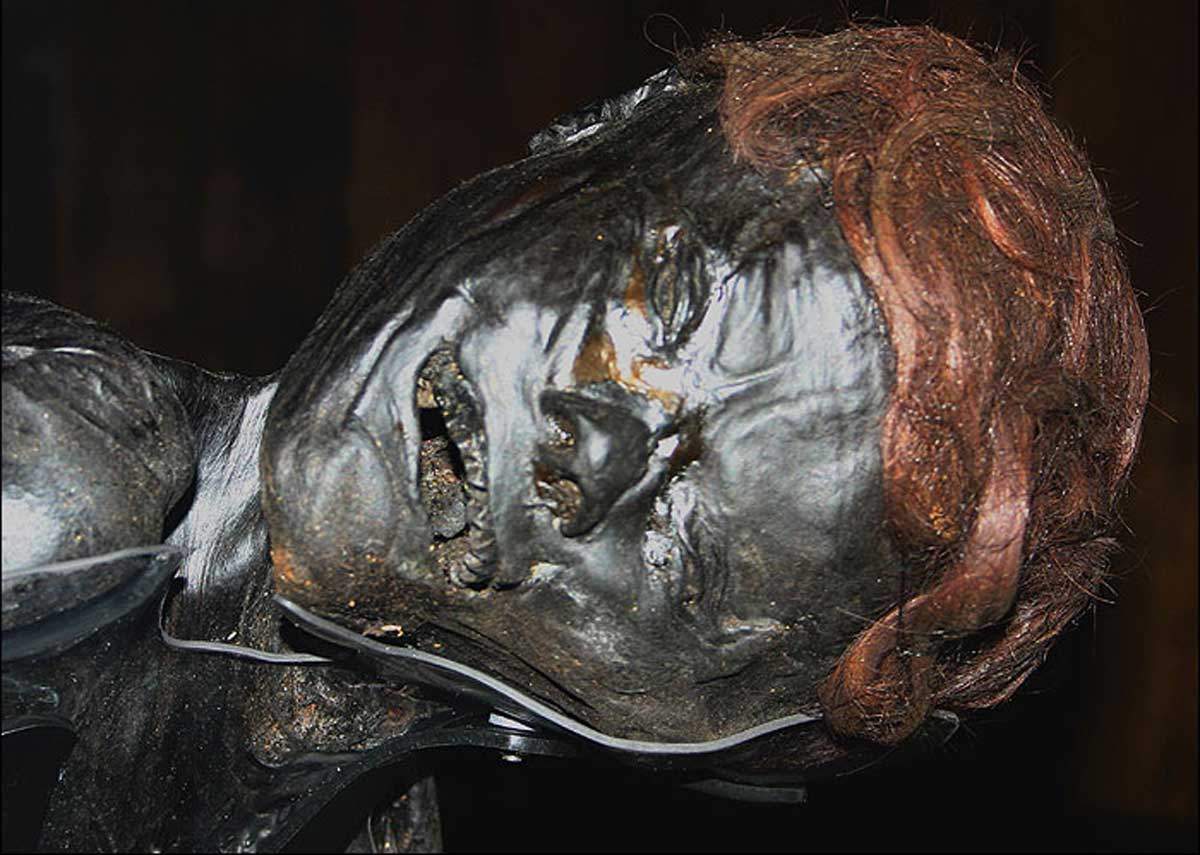
In contrast to the serene Tollund Man, the Grauballe Man, who lived between 400-200 BCE, presents a far more disturbing appearance. Unlike the peaceful countenance of Tollund Man, the Grauballe Man’s expression is strained, and his body twisted, likely due to the trauma he endured. Examination of his remains revealed that his leg was broken, and his throat had been slit prior to being placed in the bog.
Like the Tollund Man, it is believed the Grauballe Man was also the victim of ritual sacrifice. However, the reasons why these individuals were selected as sacrificial offerings remain unknown. The striking differences in their final expressions – one appearing almost serene, the other clearly in distress – only add to the air of mystery surrounding these ancient bog bodies.
The contrasting fates of the Tollund Man and Grauballe Man serve as a sobering reminder of the often violent and unexplained nature of ancient practices. Yet the exceptional preservation of these remains continues to fascinate researchers and the public alike, offering tantalizing glimpses into the lives and deaths of our prehistoric ancestors.
3. Otzi the Iceman
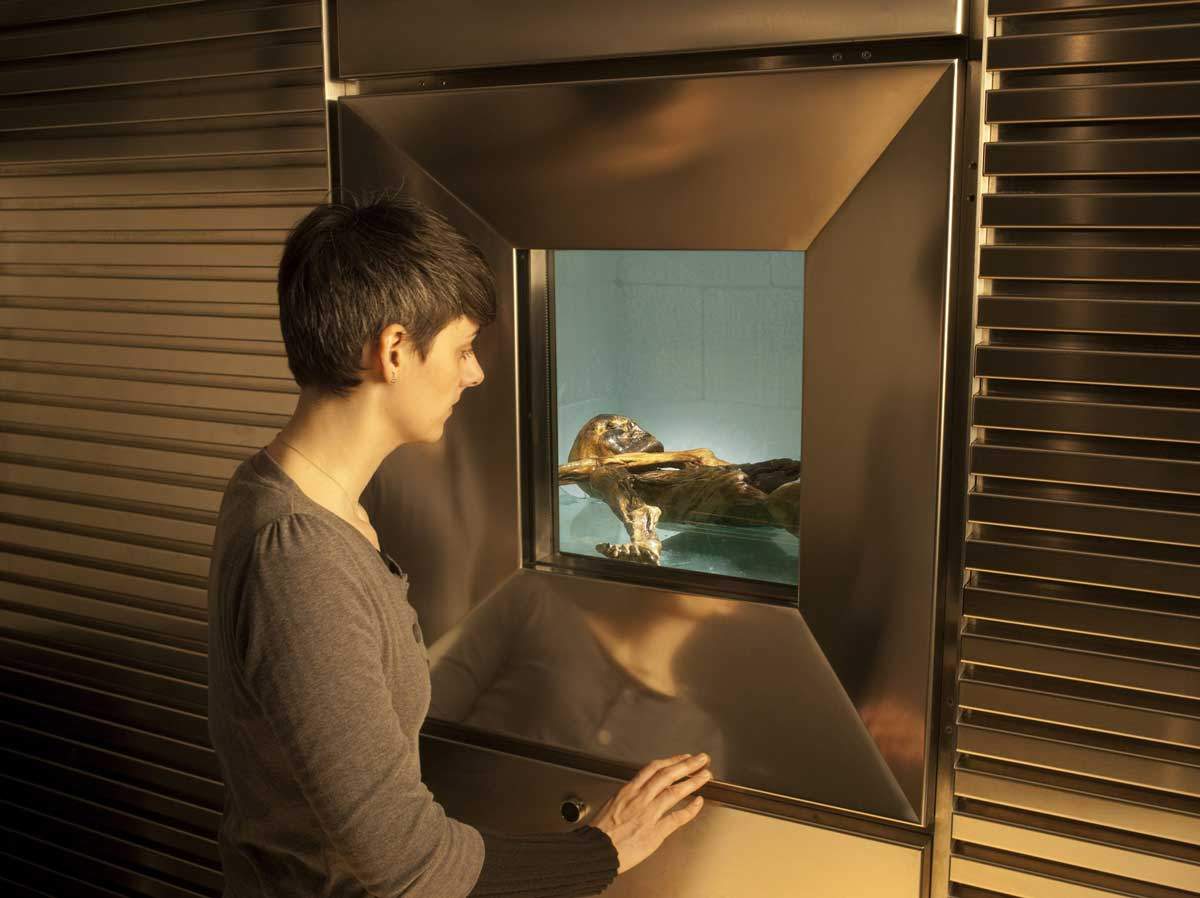
Otzi the Iceman was accidentally discovered by German hikers in 1991 when the ice surrounding his body began to melt. His body had been preserved by ice and snow for about 5,300 years in the Otzal Alps along the Austro-Italian border. His weapons and clothing were discovered near his body. It is the good condition in which the body, clothing, and weapons were preserved that make Otzi an archaeological marvel.
However, there are a few disturbing details, like the position in which the body froze, with the left stiff arm folded across the body. It is believed that Otzi the Iceman was a murder victim. At first, archaeologists thought that he had died in an accident or from exposure to the cold. After an X-ray scan in 2001, it was discovered that Otzi had an arrowhead in his left shoulder, and an entry wound was found on his back. Those studying Otzi believe that this wound would have killed him quickly. They also found a severe head wound. A wound on his hand indicated that he had been in a fight the days before his death. There appears to be no doubt that Otzi was murdered, but the reasons for his death remain a mystery.
It is also believed there was an Otzi “curse” that affected a number of people who were involved in the discovery of his body.
4. Poland Vampire Burials

In recent years, archaeologists have uncovered multiple examples of “vampire” burials across various Slavic countries. These are graves of individuals who were suspected of being vampires and were buried in ways intended to prevent them from returning to life.
In 2013, graves were discovered during road construction near Gliwice, Poland, where the deceased had been decapitated and buried with their heads placed between their feet. Decapitation was a common practice believed to keep the dead from rising from their graves.
Other “vampire” burial sites have showcased additional methods for restraining the dead. For example, one skeleton of a woman was found buried with a sickle placed over her pelvis. Other skeletons were discovered with sickles positioned over their throats, so the sickle would decapitate them if they tried to rise. Some burials involved placing bricks in the mouths of the deceased or burying the bodies upside down.
The violent and unusual nature of these “vampire” burials discovered across Slavic countries over the last decade has understandably evoked an unsettling feeling among archaeologists and the public alike.
5. Shackled Skeletons
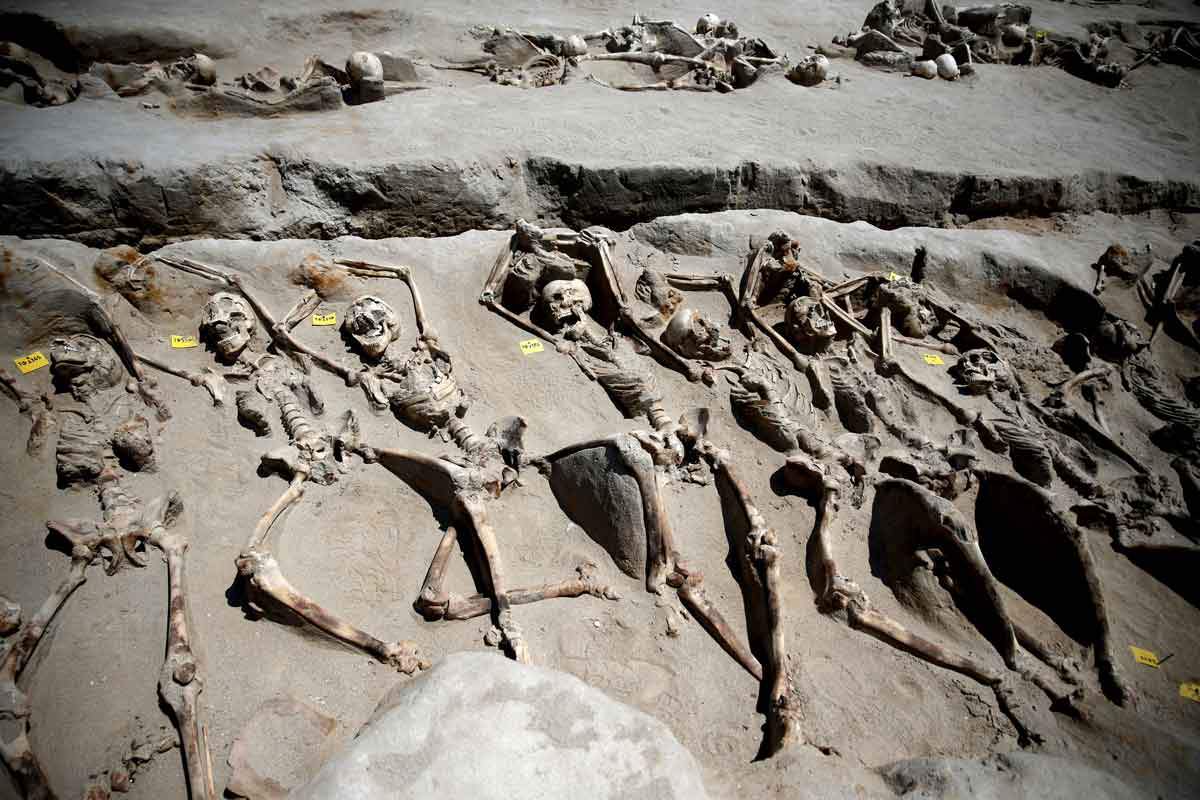
In 2016, archaeologists uncovered a troubling burial site in Palaio Faliro, a suburb of Athens. At least 80 shackled skeletons were found, belonging to young men who appear to have been in good health at the time of their deaths.
The positioning of the skeletons is particularly disturbing – their hands were bound, and many were found with open mouths, as if they had been screaming when they died. This suggests they were the victims of a violent mass execution.
Based on the archaeological evidence, including pottery found at the site, experts believe these skeletons date back to around the 7th century BCE. This was the time of the Cylon Affair, when the nobleman and Olympic champion Cylon attempted a failed coup to take over Athens.
After Cylon’s coup attempt failed, his followers took refuge in Athena’s temple on the Acropolis. According to the ancient historian Thucydides, these followers were killed shortly after leaving the temple. Archaeologists believe the shackled skeletons may belong to Cylon’s executed followers.
However, it is also possible the victims were slaves or criminals. But the respectful way they were buried suggests they were likely political prisoners or rebels, not common criminals. Regardless, this grim discovery offers a chilling glimpse into Athens’ violent past.
6. Neanderthal Cannibalism
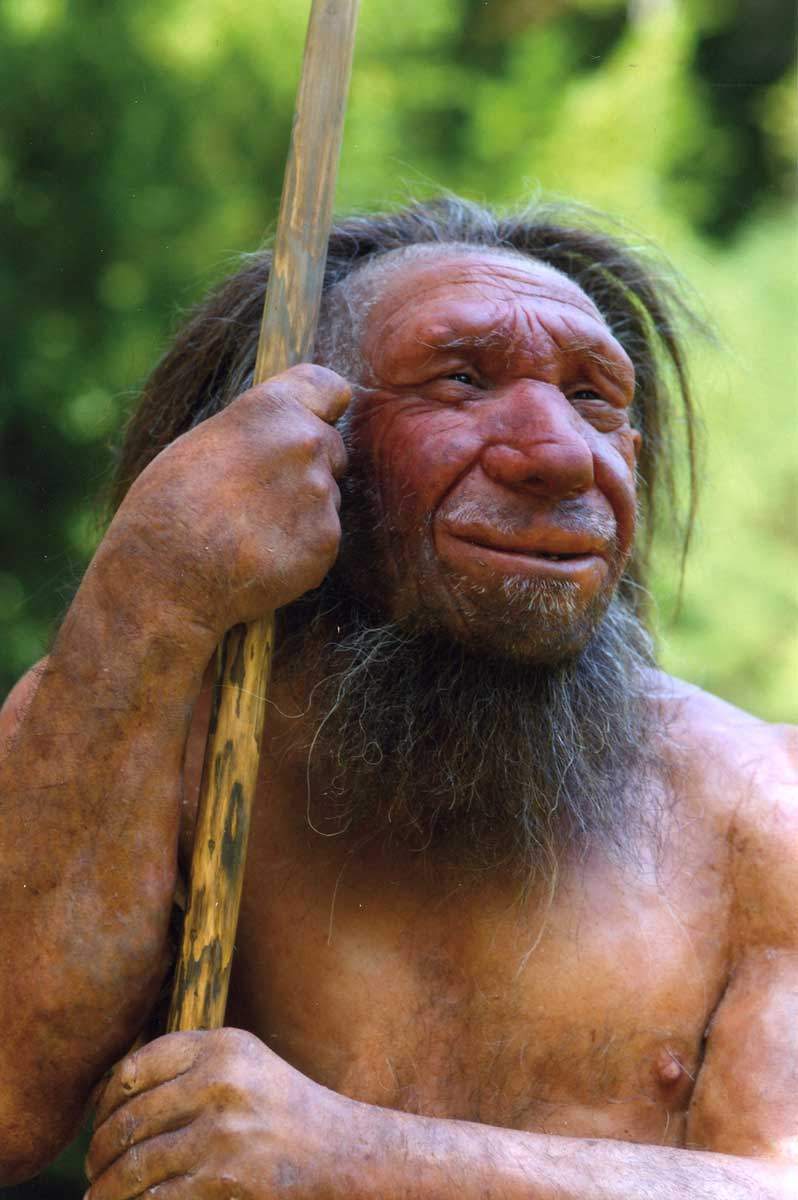
Excavations at the Goyet cave in Belgium have provided clear evidence that some Neanderthal groups practiced cannibalism. The bones found in the cave showed signs of butchery, with the bones being fractured to extract the marrow and even shaped into tools.
The human remains discovered belonged to at least four adults and one child. These human bones were cut and processed in the same way as the butchered animal bones also found in the cave.
While evidence of cannibalism has been uncovered at other Neanderthal sites across Europe, it is unclear why some groups resorted to eating each other. Malnutrition is one possible explanation, but there is no proof of this at the Goyet site.
Some experts have speculated that cannibalism may have had a religious or ritualistic aspect for these Neanderthal groups. However, the true reasons behind this disturbing practice remain unknown.
What is clear is that this archaeological evidence provides a grim glimpse into the harsh realities faced by our early human ancestors. The fact that Neanderthals resorted to cannibalism, even if only in certain groups or circumstances, is a sobering reminder of the challenges of survival they confronted.
7. Aztec Skull Rack and Towers
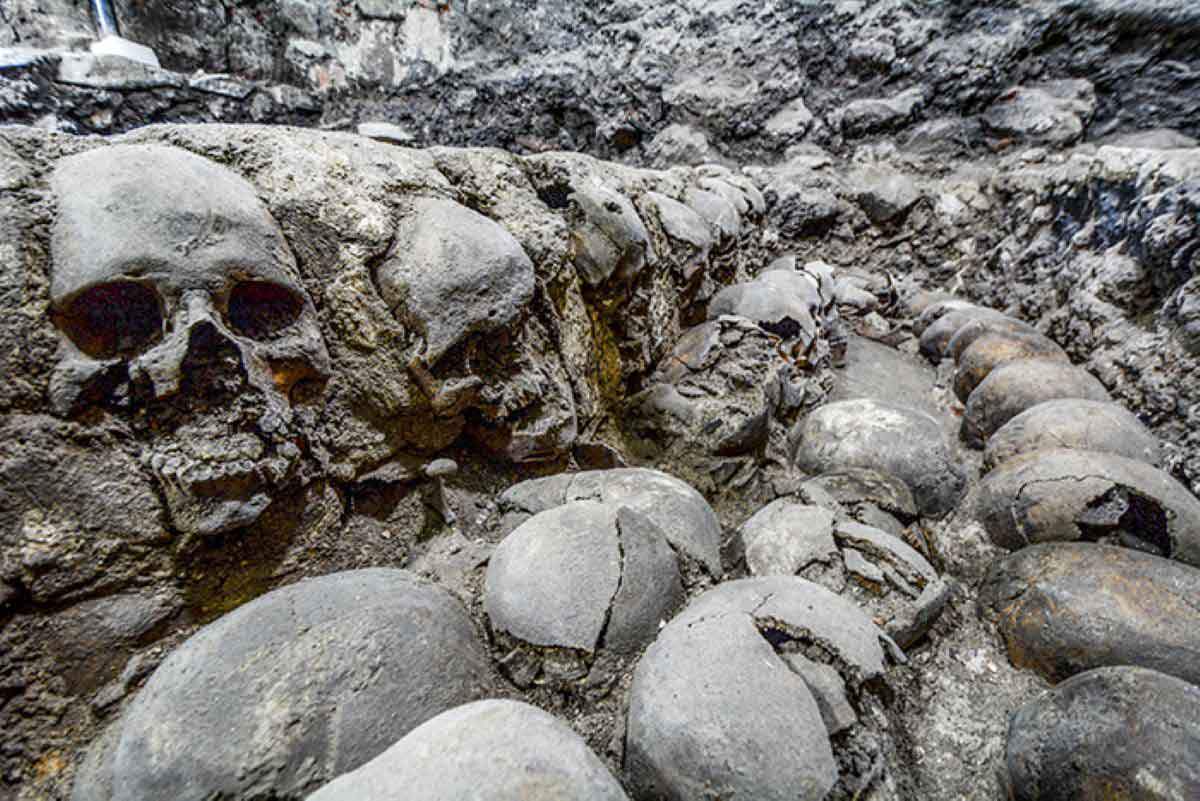
Excavations around the Templo Mayor in the Aztec capital of Tenochtitlan have uncovered an enormous tzompantli, or skull rack, that stood outside the temple. This skull rack was not merely decorative, but served as a spiritual symbol for the Aztecs.
In 2015, archaeologists discovered two large towers flanking the skull rack, and these towers were also constructed entirely from human skulls. Experts estimate that the skull rack and towers contained thousands of skulls, demonstrating the massive scale of human sacrifice taking place.
The skulls likely belonged to both sacrificial victims and enemy warriors captured in battle. Archaeologists theorize that once the skulls deteriorated on the rack, they would be moved to the towers for permanent display.
When the Spanish conquistadors arrived in Tenochtitlan, they were horrified by the sight of the tzompantli and the towers made of human skulls. The sheer scale and graphic nature of these structures must have been absolutely terrifying for anyone witnessing them.
This archaeological evidence provides a visceral look into the Aztec religious practices and the central role that human sacrifice played in their culture. While disturbing, it offers an important window into this complex pre-Columbian civilization.
